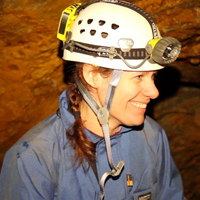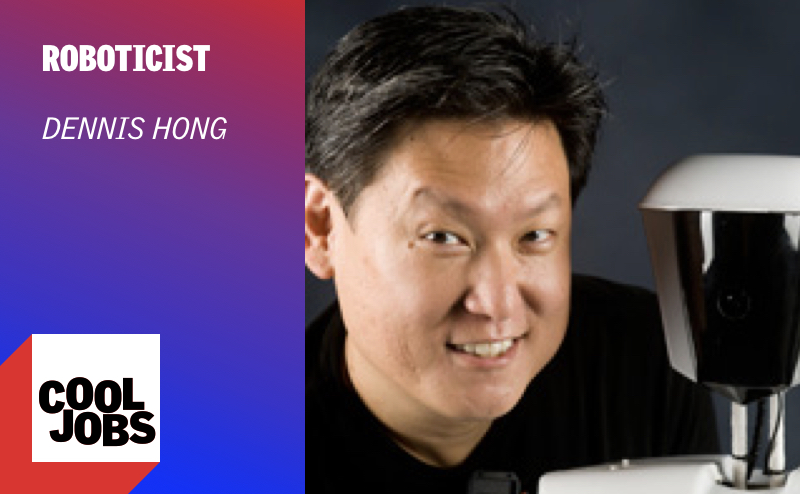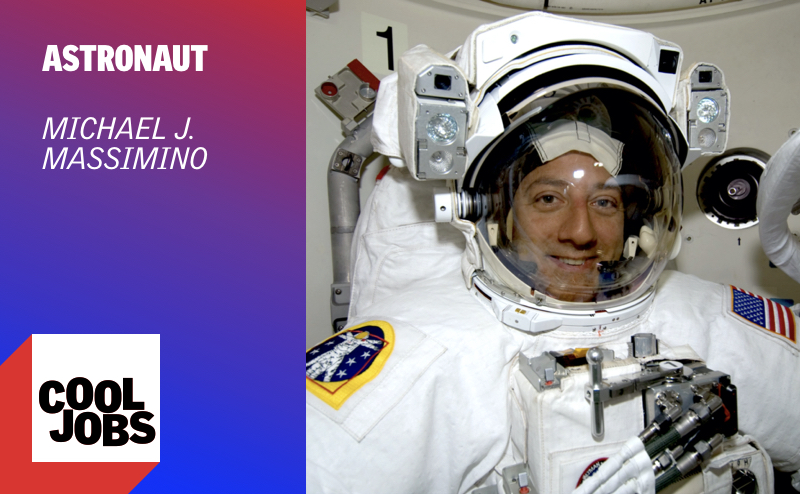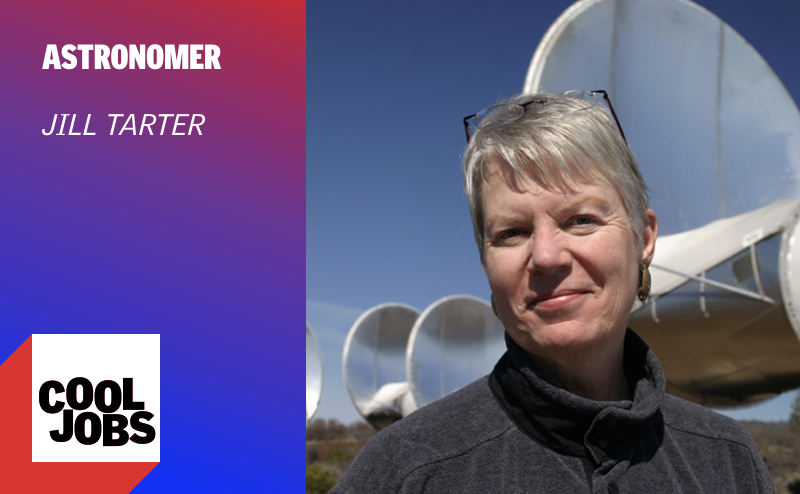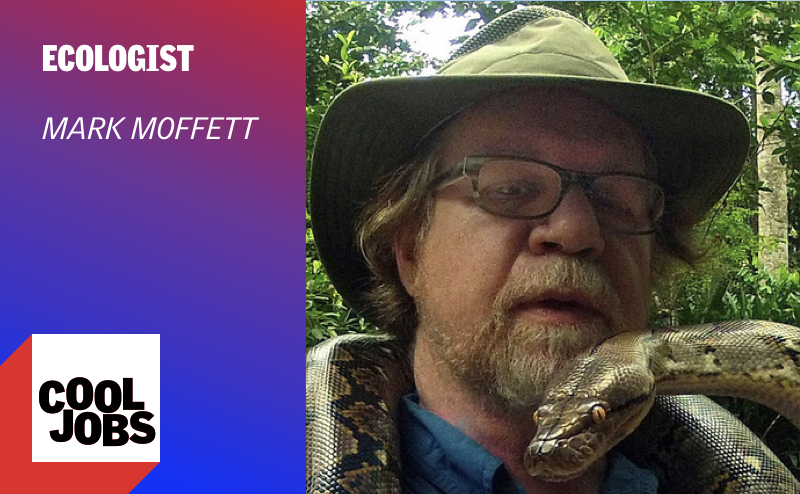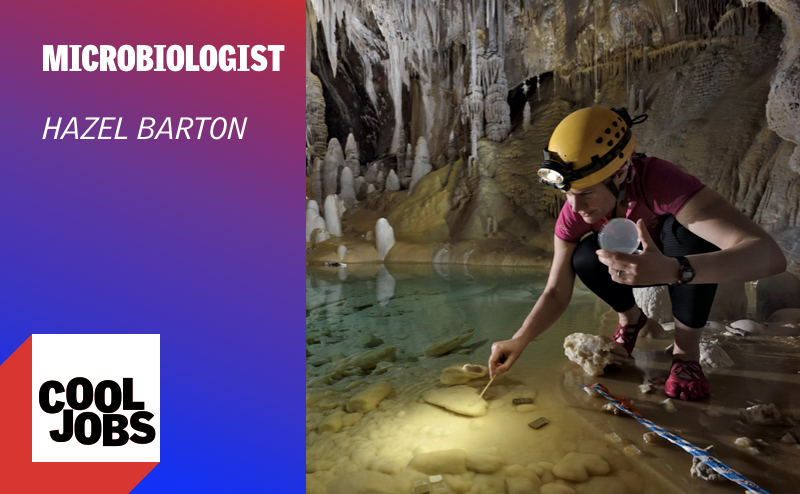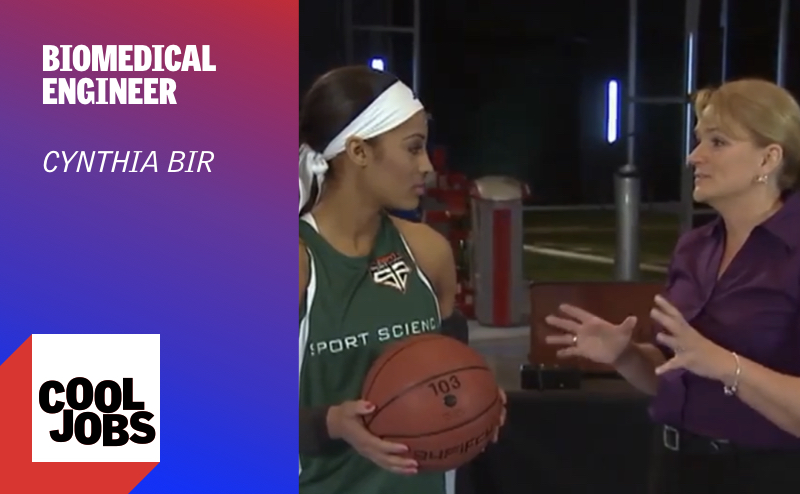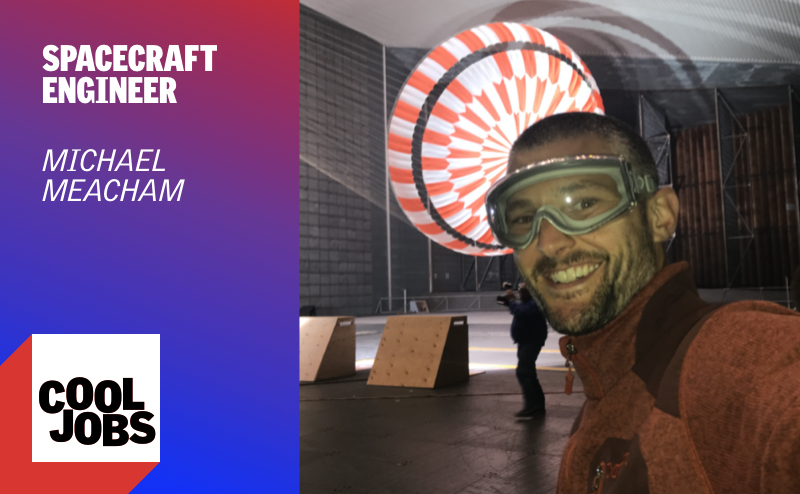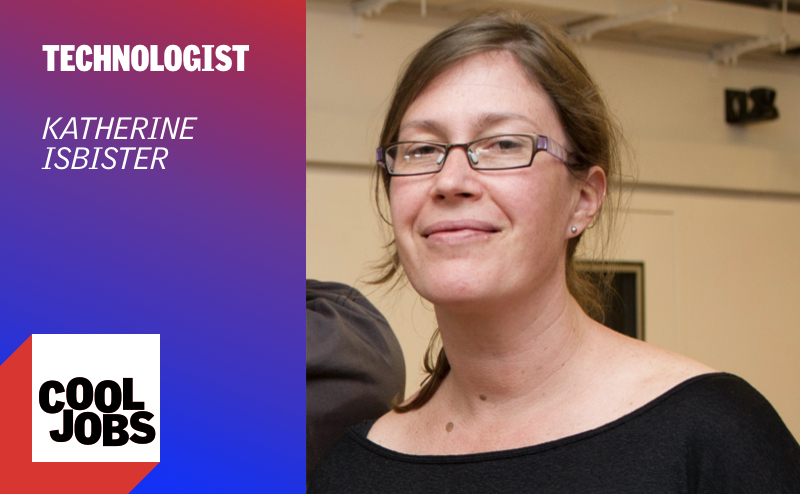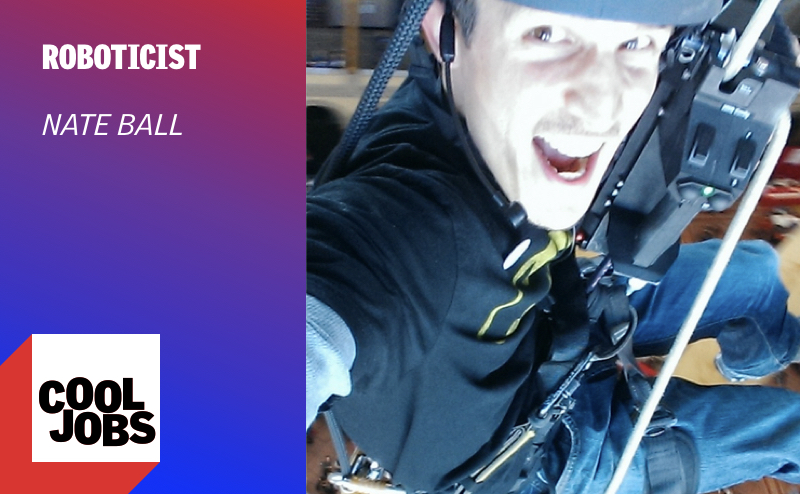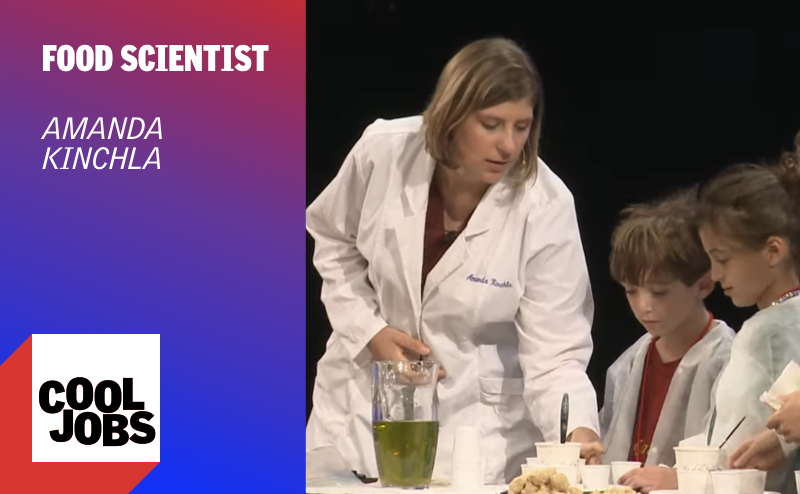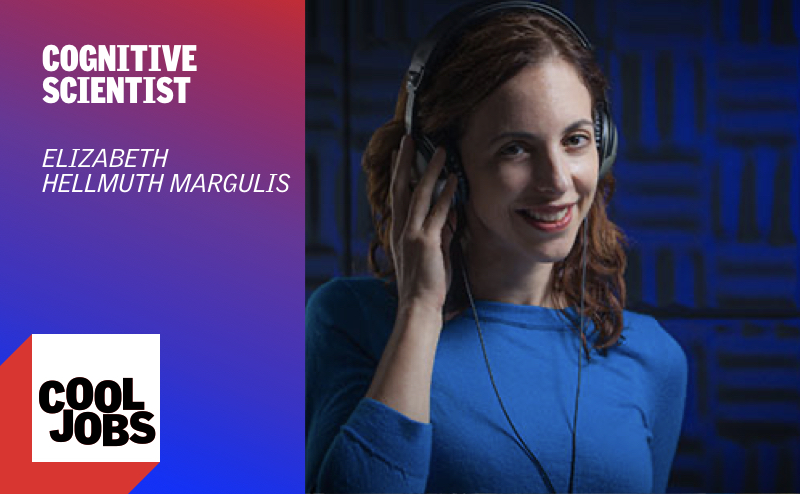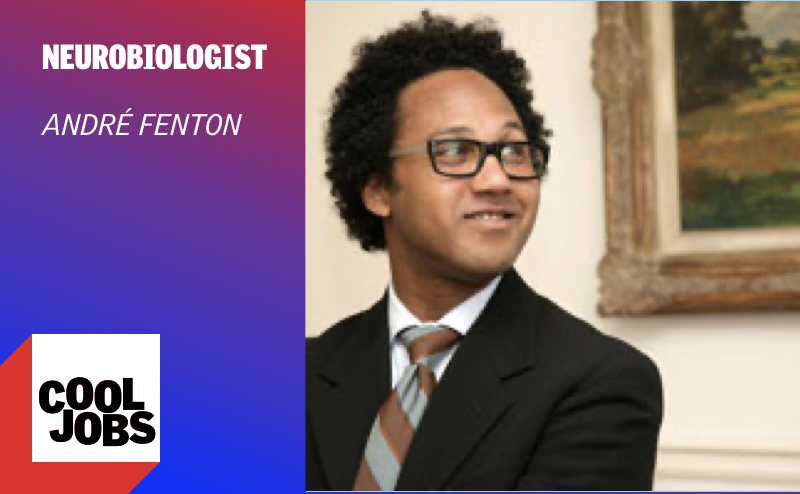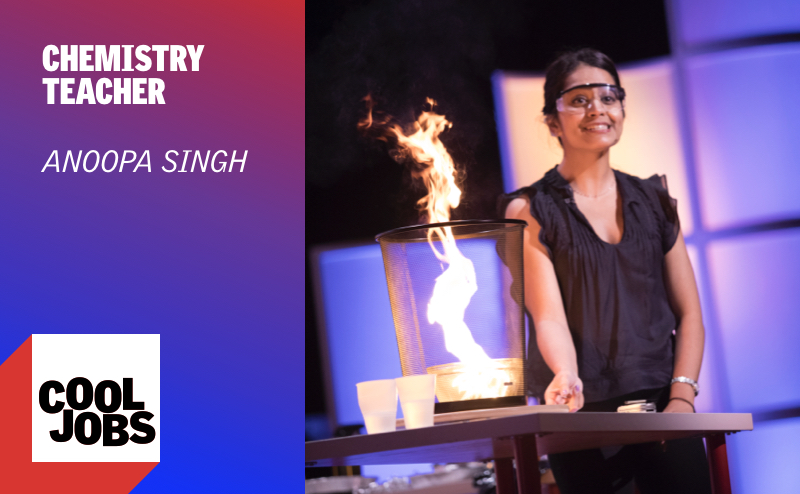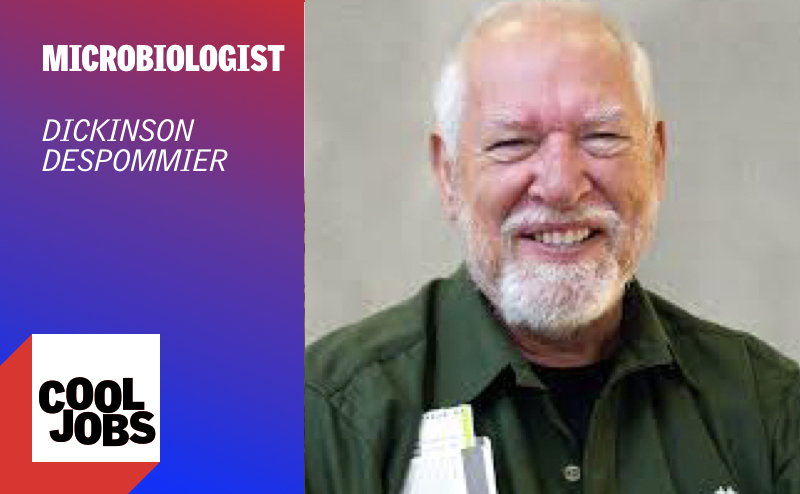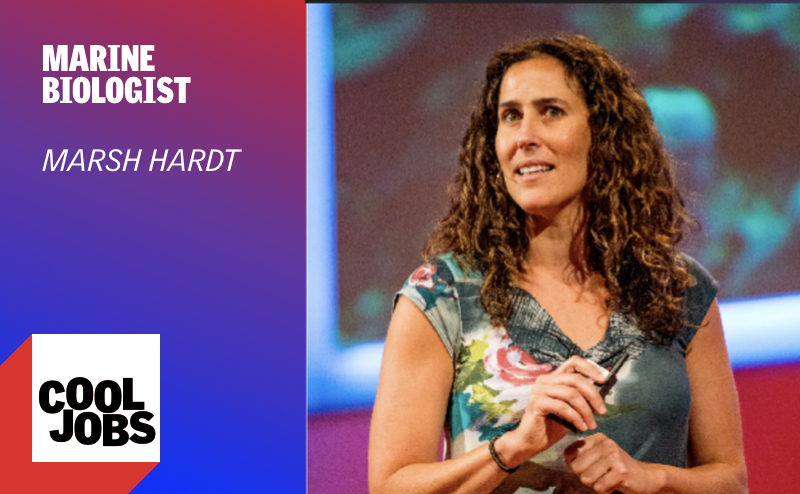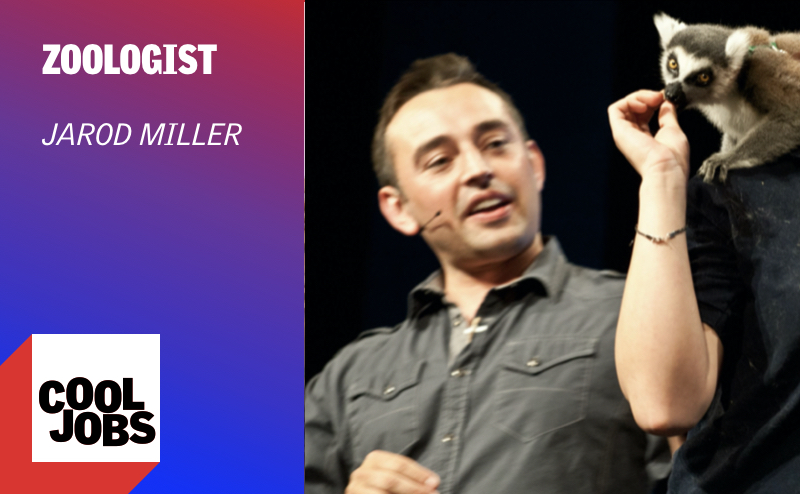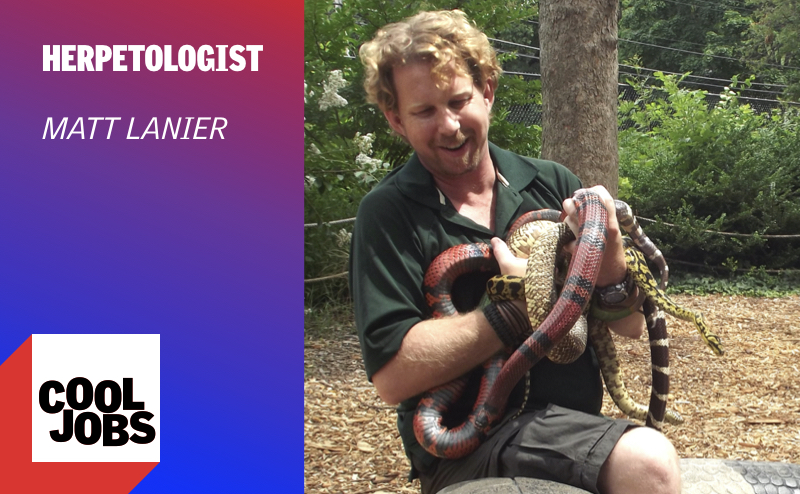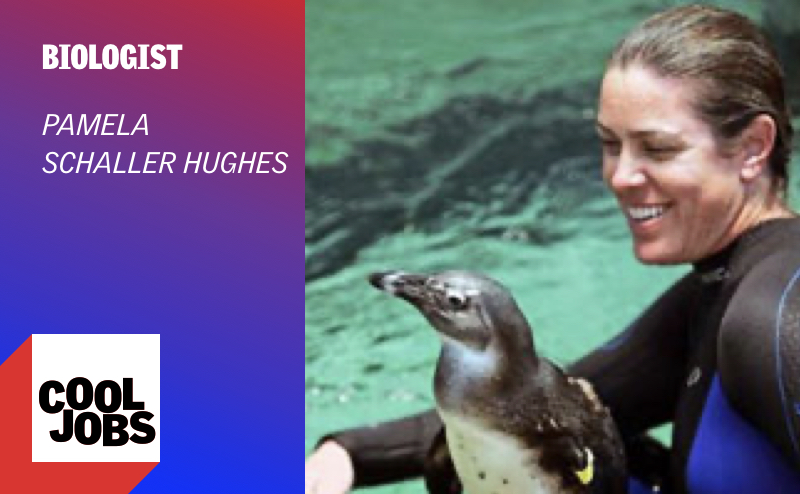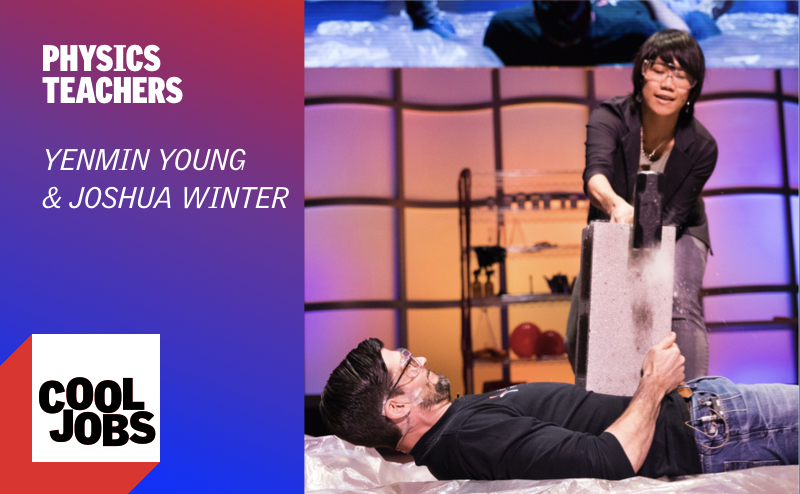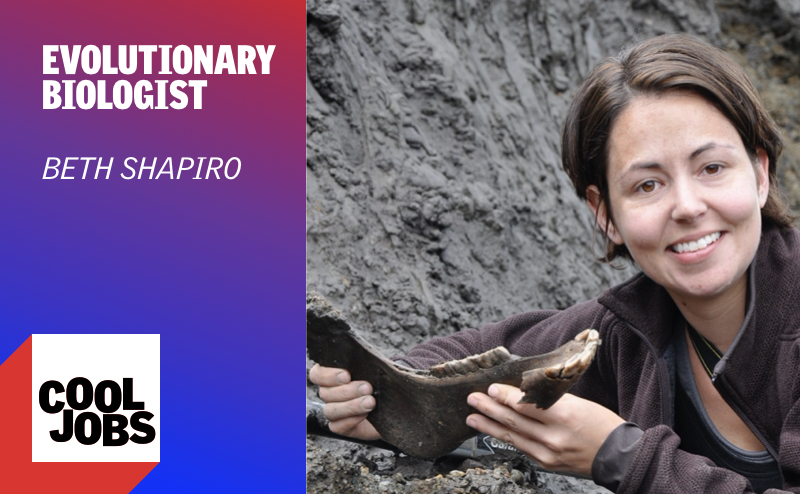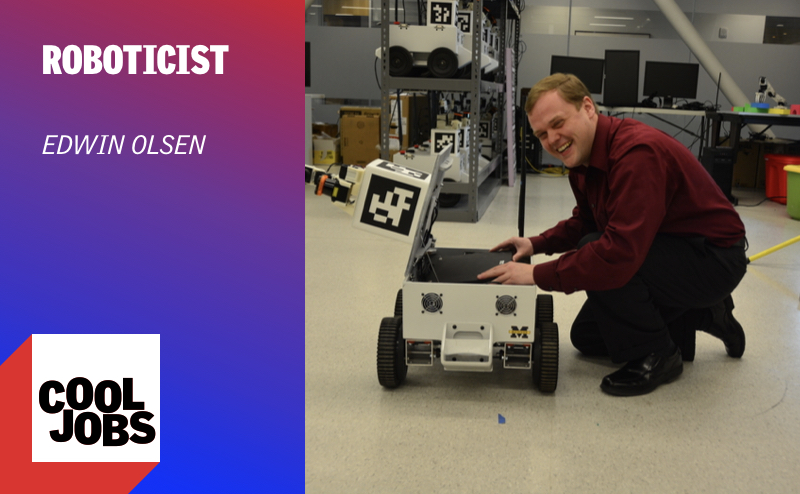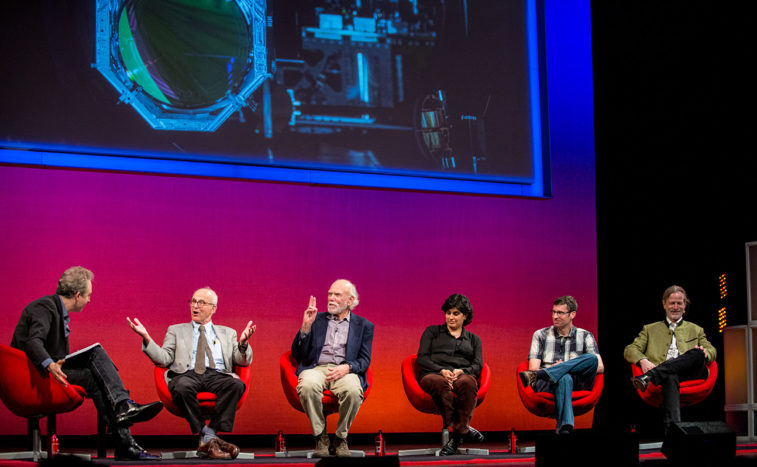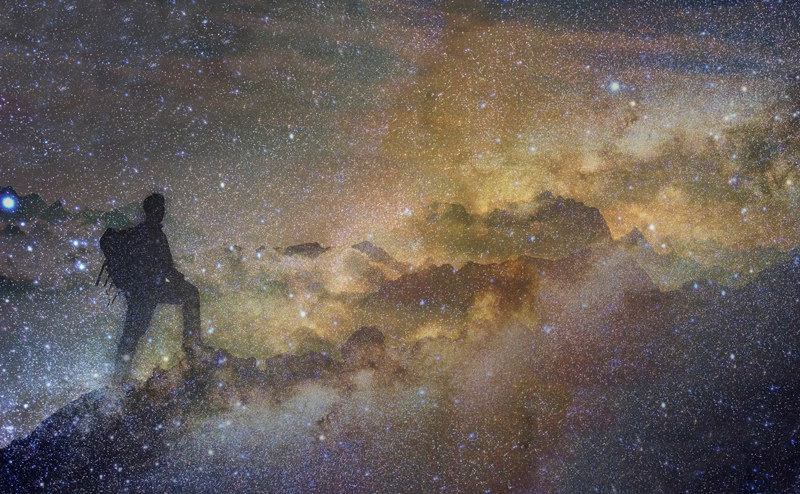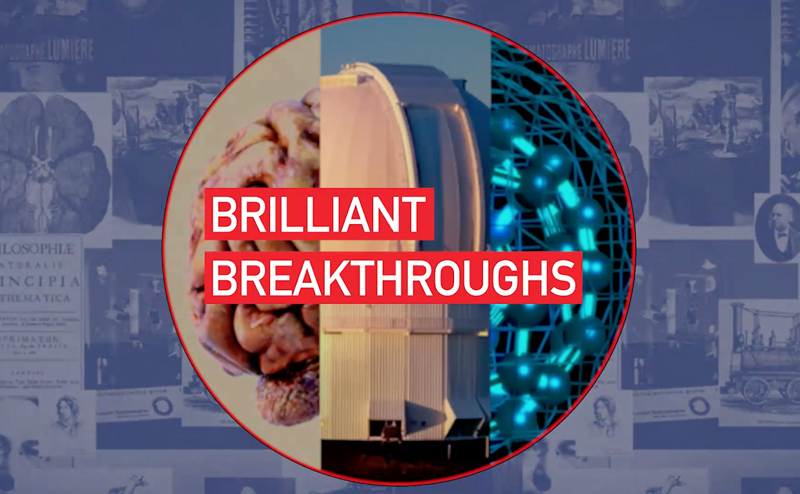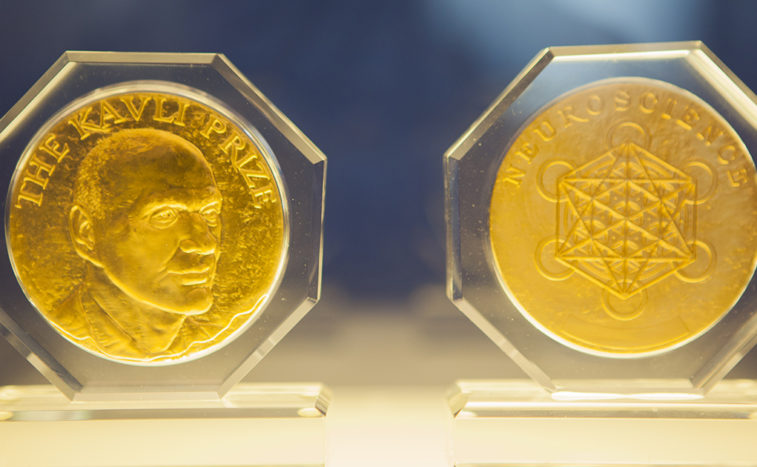51,497 views | 00:21:28
Microbiologist Hazel Barton goes spelunking in sticky mud, camping underground, and rope climbing in a atrium—all to research cures for antibiotic-resistant diseases. Episode filmed live at the 2009 World Science Festival in New York CIty.Learn More
Hazel Barton:
Thank you. It’s such a pleasure to come here. I’m going to talk to about what I do, and I am a Cave Microbiologist. And this is a photo that was taken from my vacation last week, I spent a week camping in a cave and this is where we were camping. So yes, I do have a cool job. What I do, which is to study microorganisms in caves, so that makes me a Cave Microbiologist. So a lot of people wonder what’s a microorganism? What is it? And it’s anything that you need a microscope to see. So if you look at your hand right now, you have about 50,000 microbes on your hand. Can you see them? No? That’s why you got to wash your hands, you want to make sure that you only have the good microbes on your hands.
So this is what they look like when you look at them with a microscope. This is a very high, powerful microscope. It’s called an electron microscope, and this is what we would call bacilli. So there’s only a couple of shapes that we can have with bacteria, microorganisms that I study. They can either like sausages like these guys, or they look like soccer balls. So these sausages here are so microscopic that you can put 2,000 of them head to tail across the head of the pin and they’ll just about make each side so that’s why you can’t see them. So it’s very hard to figure out who’s who when the only options you’ve got are sausages and soccer balls. How do you create a tree of life? How do you figure out who is related to who when everybody essentially looks the same?
So what we did is we also stole from CSI and we started using genetic fingerprinting. So what we do is we go into these microbes and on the outside they all look the same, but on the inside they have different pieces of DNA. And just like you have a piece of DNA that shows you who your parents are, yours are just a little bit different. We can take advantage of that with microbes. So we pull out these genetic fingerprints and we look at how microorganisms are related to each other. When people started doing this about 30 years ago, when I was a kid and I got interested in microbes and watched a TV show where David Attenborough said, “Every glass of water you drink has about 200 microbes in it.” And I was like, “Ugh, I don’t want to drink them.” So I stopped drinking for about three days and my mom forced me to drink then.
Why do we do Cave Microbiology? What’s the point of going into a cave to do microbiology? And I want to understand how microbes make a living when there’s no sunlight energy. So where we are, our ecosystem is all based on sunlight. So the sunlight makes the grass grow and then the cows eat the grass or the corn grows from the sunlight and then we eat that, and that’s where our ecosystem is based. But in a cave, there’s no sunlight. So the microorganisms have to make a living in the absence of that sunlight. And what I do is I go into caves and try and figure out how they do that. So being a Cave Microbiologist is not as glamorous as being the DaVinci detective. I got to tell you, the only reason I’m wearing heels right now is for you guys. I would have flip flops on otherwise.
This is more how I like to spend my Saturday afternoons. In England we call this the clag, it’s very sticky mud. And you can see, if you can’t make it out, there’s actually somebody trying to climb a ladder there. So I’m trying to do microbiology. You know when you go into the doctor’s office and they take swabs and samples and do that, that’s what I’m trying to do under these kind of conditions. So there’s no wonder there aren’t many of us. Sometimes it gets quite small, this is the top of somebody’s head. I know that my helmet is eight and a half inches across, and that is eight and a half inches. So if I go up to an opening and I put my hand in it like that and my hand fits, I don’t have to take my helmet off. And I wrote also, it’s pretty easy, eight and a half inches is nothing.
The tightest I’ve ever done in a cave is six and a half inches, which is about that. And you have to take your helmet off and slide it ahead of you. Also, you can’t breathe because when you breathe, your chest gets bigger. So what you have to do is, if you feel that, you feel how your chest collapses. So what you do is you blow out all the air and then you kind of push your way through and you can actually squeeze through. I have a friend Nancy, the smallest she’s ever done is five and a half inches and the bit that stops her is her cheekbones right here. We were exploring a cave one time and I was behind her, and anyway her underpants kind of came off. You always want to make sure you do that kind of stuff with your best friend.
Alright, so it can get tight. It can also get tight and full of water. So you’re doing the same kind of thing. This is a cave in New York so you can imagine how cold it is up there. That water is probably about 42 degrees centigrade, and we call it an ear dipper because he’s got one ear dipping in the water. And then sometimes there’s just no air there at all, so what we have to do is cave diving. So we take scuba tanks and we actually go into the caves and that takes an awful lot of training to do that and also do that and try and do science at the same time. So it’s really a very fun job. And when they said, “We’d like you to come here and talk about your fun job.” I was like, “Yeah, I have a fun job.”
So what do we get out of cave microbiology? What’s the point of going into caves? What do we learn? Well, what we look at are some of the applications of this. So we’re not just doing it because it’s an interesting thing to do, and it is really interesting. Our bugs do crazy things. They chew into rock, they pour energy out of the atmosphere itself. But there are also a lot of applications for people. So one of the things we do now is drug discovery. We look at these microorganisms that have come up with a lot different ways of solving problems underground and those different ways of solving problems can be used for us to solve problems. So, because there’s not a lot of energy down there, they all have to fight and they all have to compete with each other. So they make these lethal chemical weapons and those turned out to be new forms of antibiotic. So we worked with a drug company and we’re discovering new antibiotics that could help to save people in the future.
We also work with issues related to climate change. You see these beautiful formations here, they’re precipitated as calcium carbonate. And we know that microbes in caves can help precipitate calcium carbonate. The way they do it is they pull carbon dioxide out of the air. So they can actually take CO2 and turn it into rock and fix it in a geologic form, which could be stable for millions of years. There’s a lot of potential for that.
We also do bioremediation about some of the pesticides that get put on the ground and the bad things they do to frogs. We know that microorganisms in caves can actually break down some of these pesticides and take them out of the water. Not only is that good for the frogs, but that also helps us because we don’t want to be drinking that pesticide contaminated water either.
And then we try to understand life on Earth. Life on Earth formed before we had photosynthesis, before that sunlight energy could be trapped and turned into plants. So how do microorganisms do that? What were the mechanisms that they came up with before photosynthesis, before 3.2 billion years ago when photosynthesis first started happening? How do we figure that out? So caves are really useful for giving us that information.
So I’m just going to show you some of my holiday pictures so you can see. One of the things we do is we call it geomicrobiology, because we’re doing microbiology in geologic environments. Being a scientist is about studying everything that’s relevant to what you’re doing. So geology is really important when you’re studying microbes in caves, so we call it geomicrobiology. And we look at caves formed in silica and there is only one place in the world that caves form in silica and that’s Venezuela in South America. Now this is where we went, this is the Tepui Mountains of Venezuela. This is Kukenán. So yes, I do have a cool job. It took four days to get there and we had four plane flights and then a helicopter ride. And we got on top and I decided that it was such a cool trip for my students that therefore they should have to carry me around for the entire rest of the trip. So this is them holding me. This is more likely the kind of shoes I’d be wearing.
And we’re on top of this tepui and it’s made of silica. It’s made of an orthoquartzite so it’s basically glass and it’s really insoluble. Has anybody seen Up, the movie Up, the animation? Yeah, you guys all say that? This is the same place, this is Roraima tepui that they based Up on. And it’s very hard for caves to form so there shouldn’t be any caves up there, and we went up there and there’s a 16 kilometer long cave. And we think that the microbes are involved in its formation. This is my postdoc and you can see there’s all these white dots all over the ceiling and we’re pretty sure those white dots are the microbes and that the microbes are actually eating into the rock and helping form the cave. Why this is important is because if we go to places like Mars, the kind of caves that you would find on Mars would be very similar to this. We think that the energy that’s supporting that is radioactive decay. So the radioactivity breaks apart water and generates hydrogen gas and that hydrogen is powering the system. It’s a really amazing place to do research.
The other thing we do, and this is kind of related to Mars, is one of the things we found in caves is that microorganisms are very adaptive to starvation. They’re really good at scavenging tiny amounts of energy. And when we take those microbes and we compare them to everything else in the database, we always get the same hit. And that’s from a colleague of mine who isolates microorganisms in this kind of environment. And this is a spacecraft assembly facility so when you’re going to build your spacecraft, you’ve got to put it together, you’ve got to assemble all the parts into a spacecraft. So that’s called a spacecraft assembly facility. And it turns out that there were microbes in there and they’ve adapted to live in that environment that has no energy in it. So we actually find the same kind of microbes. So we help NASA with something called planetary protection.
And what that means is we can help them understand how microorganisms can grow in and around their spacecraft and how they can stop that happening. And that’s really important because this is the Phoenix Lander that was on Mars last summer, you guys remember hearing about it? It had its scoop and it would come down and pick up settlements. You don’t want to send a bug up on that spacecraft that’s going to land on Mars. That bug is going to fall off and then start growing and contaminate Mars. So we help them understand that. And this is me helping them. This is the Phoenix Lander behind him, we’re at Kennedy space center. It could be anybody I could be telling you it’s anybody, but I’m the one on the right hand side. And then this is the nicest thing about my job, there’s the Phoenix Lander that I got to help make sure had no microbes on it landing on Mars. They had the Mars Observer take a photo of it and you can see it. This is an enlargement here flying down across that crater to land on Mars.
It was really a very exciting moment. So I just really quickly want to tell you how I got to be where I’m at. So here’s where I started. Of course, I had a fear of math and a fear of chemistry so I avoided both and went straight for biology. Okay, it was a good plan. And when I was doing my undergraduate degree, I realized I love microbiology. I love that you can stick your finger on an agar plate and something disgusting grows up. So I started doing microbiology and then I started trying to understand how proteins bind to DNA and control things in microbes. And to do that, I had to do biochemistry. Now I had a fear of chemistry, but now I’m doing biochemistry. And the reason was that chemistry didn’t seem to make much sense to me until I needed it to do something, until it became a tool for me to use. And then it was like, “Oh, chemistry is really cool. I love chemistry.” So there we have our chemistry. And then because I was looking at how things were moving around in solutions, I got to do physical biochemistry. So not only was I doing chemistry, but there was physics and that had math.
Now I do microbial ecology. So I took everything I learned in that microbiology and apply it to microbes in the environment and to do that, I have to do something called phylogenetics and phylogenetics is building those trees. And you have to use a lot of math to see how DNA orders organisms so there is a lot of math in that. And then we do geology, which I already talked about, we’re geomicrobiologists, and to do that, you have to look at how microbes alter the surface of things. So you end up doing materials chemistry, which is looking at surfaces and that’s got chemistry. And then that’s how I came to be a cave microbiologist. But what I wanted to show you guys is that’s not a straight line. The most important thing is for you to follow what interests you because you never know where you’re going to end up, but the journey is just as much fun and you may end up having a really cool job as well. Thank you.
Microbiologist Hazel Barton goes spelunking in sticky mud, camping underground, and rope climbing in a atrium—all to research cures for antibiotic-resistant diseases. Episode filmed live at the 2009 World Science Festival in New York CIty.Learn More
Hazel A. Barton has explored caves on five continents, studying microorganisms to research cures for antibiotic-resistant diseases. She coordinates an active undergraduate research laboratory, including a National Institutes of Health funded study examining microbial responses to starvation and a National Science Foundation funded project examining the energetic interactions of bacteria in cave environments.
Read More© 2008-2023 World Science Foundation. All Rights Reserved.
World Science Festival ® and its related logo are registered trademarks of the World Science Foundation. All Rights Reserved.

